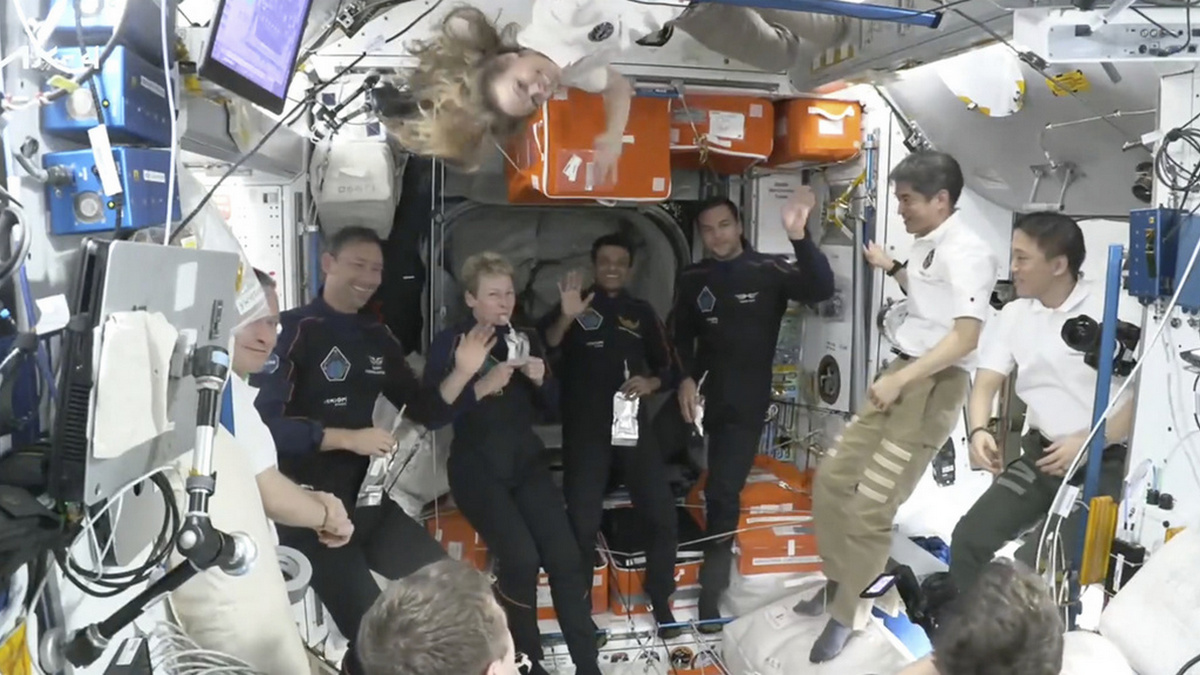The Axiom Mission 4 (Ax-4) team on the Crew Dragon spacecraft has reached the International Space Station (ISS).
The craft piloted by Shubhanshu Shukla and the team led by Mission Commander Peggy Whitman successfully docked with the ISS.
Shukla has become the first Indian to reach the ISS and the second Indian to get to space.
Shukla and the others including Captain Whitman have successfully entered the ISS.
But how did it go down?
Let’s take a closer look
How did it go down?
First, let’s take a brief look at the lead-up to the docking. Docking is a complicated and autonomous process. Only a handful of countries till date, the United States, Russia, China and India, have succesfully done so.
The first part was getting the Space Dragon capsule to align perfectly with the ISS via its thrusters and boosters. Once the spacecraft got into range of a few hundred metres of the ISS, the onboard computer took over — making the necessary minor adjustments.
Then a number of checkpoints and are reached and the status of the approach is judged. Here, the crew takes the final call whether to dock or not. Once the distance between capsule and the space station was under five metres, only the onboard computers could abort.
The Crew Dragon then successfully docked with the ISS .
Next, the post-docking cabin configuration was carried out to to allow Shukla and the others to board the ISS.
First came the soft capture – the crew dragon making contact with the docking port of the International Space Station.
Next came the hard capture with the locking mechanism being sealed.
A cable linking the capsule to the station – known as the ‘umbilical cords’ – were connected.
This allowed the capsule’s power and communication lines to sync up with the ISS’ systems.
Pressure leak checks were then carried out.
The doors of the ISS were first opened – followed by that of the Crew Dragon.
Axiom-4 Commander Peggy Whitson was the first one to board the International Space Station.
She was followed by Shukla, who was greeted by smiles and hugs.
“We were waiting for days and praying everyday for the successful lift off and docking. This has happened today. We are very happy and proud of him…This is not easy to reach here. It takes a lot of hard work, effort and time. He gave it his all and reached here,” Shukla’s sister Shuchi said.
What will Shukla do on the ISS?
Shukla and the crew will be on the ISS for the next two weeks.
Shukla is carrying kits developed by IITs, IISc and the Department of Biotechnology (DBT).
He will conduct seven indigenously developed scientific experiments.
This includes growing moong and methi in zero gravity to study the effects of microgravity on plant growth.
He will also study tardigrades also known as water bears.
These small creatures are famed for their ability to survive extreme environments including space.
Shukla will also study the effects of space on muscle degradation – a key worry for astronauts.
Another study will chart how astronauts respond and react to digital screens in microgravity.
These experiments will be of vital importance to India for the upcoming Gaganyaan mission and such future voyages in space.
With inputs from agencies


)

)
)
)
)
)
)
)
)



